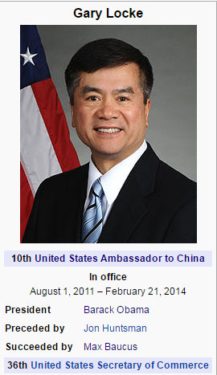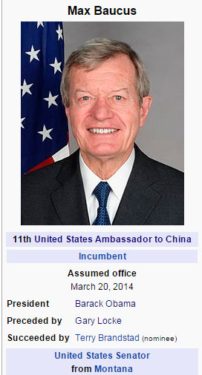Category Archives: Newsroom
Why catastrophising is my idea of a good time
My pet problem is human population. I think those demographers were right. Because I’m so fiercely attached to my own version of the world — even more so than to the future prosperity of humanity, apparently — you should distrust anything I say about population. In kind, left-wing westerners are mightily attached to a gaping gulf between developed and developing countries that doesn’t exactly exist anymore, the better for progressives to feel as guilty as possible, because, gloriously, it’s all their fault. Tell them that poverty is on the wane, most of the world lives in a medium-income bracket, and the gap between rich and poor has narrowed, and they will get annoyed. They also won’t believe you.
The idea that the end of the world is nigh is invigorating. A dark horizon makes the foreground more vivid, and life seems more precious when it’s imperilled. Complacency about how delightfully matters are puttering along feels passive and soporific. For those of us addicted to shooting up gloom and collapsing in an ecstasy of inexorable Armageddon, optimism appears pallid, nay, repulsive — not an opiate, but a disgusting mug of warm milk.
I am pretty much the opposite. Even the things I know how the potential to be catastrophic in ways that my brain can comprehend (such as antiobiotic resistance), I yearn to push them out of my mind. And succeed, for the most part. All of this is not good when we can do something about (as many believe about climate change), but most of the time I can’t.
And here’s a (very) country song that you’ve never heard on the subject:
When it comes to politics, few things are as instructive of partisan behavior as watching sports. The two may not be the same, but boy howdy do they rhyme.
This applies also when talking about politics and the media.
Anyway, Southern Tech recently made a controversial hire for its football program. He wasn’t controversial because he’s a bad coach, but because of some stuff that went on off the field that he probably knew about.
The Colosse Herald ran an opinion piece critical of the hire, and a news piece that spent 70% of the article talking about The Scandal. That seems a bit excessive to me, but only somewhat. The Scandal is half the story, in my view, maybe a little less. Other aspects of the story, such as the fact that he is a Packer alum and that he and his wife met at Southern Tech as well as his coaching career itself were all worthy of more note than they got. But though my judgment may differ, reasonable minds can differ on whether we’re talking about 40% of the story or 70% and at some point I have to admit I am a bit of a partisan here.
Anyway, I was on the forums and not surprisingly most people there took a different view. They were talking about canceling subscriptions and how the Herald owes it to the community to support the team. Some pointed out that’s not how journalism works.
Others pointed out that maybe the article wouldn’t have been so critical if Sotech hadn’t become so unfriendly to the media lately. This was used by sub-partisans against the athletics director who has taken a more restrictive attitudes towards the press. Others pointed out, retaliation is not how journalism works.
For the most part, though, there was the expectation that the media should be able to rise above shabby treatment by the Southern Tech athletics department, but also that it should understand the local market and cater to it by being supportive of the team.
Anyhow, this reminded me somewhat of criticisms of various attempts on the left to boycott the New York Times. A lot of the arguments come down to view that conservatives are never going to buy the paper so they should cater to the preferences of those that do (or they should pay a price). This is conducive to journalism when they are objecting to hiring a conservative columnist, for example, but it’s highly questionable when it comes to what political things they choose to cover and how they choose to cover them.
This is not inconsistent insofar as if you are a liberal and believe that reality has a liberal bias, then anything but what might be perceived by everybody who isn’t liberal as bias is in fact bias in the other direction. One of the nice things about the sports politics discussion is that fewer people are under time impression that such higher truths are in play. More people actually know they’re partisans.
Of course, on some level they are absolutely right about what the news outlets should be doing. It probably is in the best interest of the New York Times to cater to their audience and the audience with greater potential. They sometimes miss some of the nuances (ie just because Krugman gets forwarded more often than Stevens that doesn’t mean they’re financially better off getting more Krugmans and fewer Stevenses). As conservative viewers are siphoned off by expressly conservative outlets, the center of the media commons moves to the center left. And as such, the center-left becomes the audience they need to appeal to.
As the outlets get squeezed, they may need to work harder on the audience they have. The implications of that – especially to the extent that this has already happens – are a double-edged sword.
National Park Service ends policy encouraging parks to ban plastic water bottle sales (The Hill)
The National Park Service has ended a policy encouraging national parks to end the sale of plastic disposable water bottles that was aimed at reducing pollution and plastic waste.
In a statement, the NPS said they were lifting the policy to “expand hydration options for recreationalists, hikers, and other visitors to national parks.”
“While we will continue to encourage the use of free water bottle filling stations as appropriate, ultimately it should be up to our visitors to decide how best to keep themselves and their families hydrated during a visit to a national park, particularly during hot summer visitation periods,” acting National Park Service director Michael T. Reynolds said in the statement.
I find the arguments against bottled water to be pretty compelling in general, but I think Trump is in the right on this one. Symbolic legislation has its place, but this is the government making bottled water less accessible where it’s most useful. Most bottled water is consumed around the house, where people can really come up with alternate arrangements (such as tap and filter) easily enough. Even those used outside the home are in places where there is a degree of flexibility waiting for the next water fountain. On the other hand, national parks tend to be places where you’re most likely to be concerned with hydration. You don’t want to stand in the way of people and their water because they forgot their bottle.
The policy formulation strikes me as “Bottled water is bad” and “We have control over the national parks” therefore “We should ban bottled water there.” Which is true, true, and false.
A new CDC report could reignite the debate over Hollywood’s influence on teen tobacco use
The drop in the percentage of youth-oriented films featuring tobacco use, as well as the dramatic decline in tobacco occurrences in G and PG films, is positive. Still, tobacco impressions within films geared toward teens and young adults hasn’t improved since 2010. If it had, the CDC reports that all youth-rated films would have been completely smoke-free by 2015. Instead, “the average number of tobacco incidents increased 55 percent in youth-rated movies with any tobacco depiction,” a result of five of Hollywood’s six major movie companies — all of which have corporate tobacco depiction policies — featuring more tobacco use.
The answer to the issue lies with where, how much, and what type of tobacco is being used in cinema. In short, fewer movies are featuring not just more smoking but more kinds of tobacco use. That concentrated increase is once again raising concerns about the relationship between tobacco’s presence in media and an increased likelihood of picking up the habit.
To clarify: Smoking in youth-oriented movies is down, it’s especially down in movies aimed at younger audiences where people are most impressionable, and of course smoking rates among the young are down. They really, really need something to be alarmed about.
Smoking rates are down and have been doing down a while. Smokers are going broke paying ever-increasing taxes on cigarettes. Most people hate smoking, and smokers. More smokers than not hate smoking and themselves for their havit. Can public health at some point just declare victory and go home?
 This October piece by Michael Brendan Dougherty seems kind of prescient. There’s a degree to which people who a few weeks ago were bragging about how the Deep State was going to obstruct Trump’s agenda are now freaking out that Trump is going after the Deep State.
This October piece by Michael Brendan Dougherty seems kind of prescient. There’s a degree to which people who a few weeks ago were bragging about how the Deep State was going to obstruct Trump’s agenda are now freaking out that Trump is going after the Deep State.
And from November, Ed Krayewski argued that if you don’t understand how anyone could have voted for Trump, you’re why Trump won.
Never mind whether it’s fair to conservatives, Musa al-Gharbi argues that the lack of ideological diversity is hurting social research. I don’t know what you do about a feedback loop this far in, though. {More}
As Uncle Steve alludes to, it’s easier to be a sanctuary city where nobody unrich can afford to live.
Jason Richwine notes that the children of immigrants are learning English, but fears they are not sufficiently forgetting Spanish. Yeah, not too worried about that.
DishGirl writes of abortion regret and the sorry it can leave behind.
Analysis: ESPN Lost Republican Viewers Across the Country in 2016 – Outkick the Coverage
All told, the ESPN audience across the network’s channels was already liberal in 2015 – but it became more liberal in 2016 as Republicans stopped watching:
- The ESPN audience became 5% less Republican in 2016 than 2015 across all 43 markets analyzed.
- ESPN2’s audience became 10% less Republican during the same time period.
- The biggest partisan shift happened on ESPN News, whose audience became 36% less Republican and more Democratic.
- ESPNU’s audience became 12% more Democratic in 2016 compared to 2015.
- ESPN Deportes – whose audience already skewed very liberal – became 27% more Democratic.
- In all, 34 of the markets included in our analysis showed the audience of the flagship ESPN network become less Republican in 2016 compared to 2015; the ESPN audience became more Republican in only 9 of the analyzed markets.
This is interesting for a couple of reasons. I have poo-pooed the notion that politics is surrounding ESPN’s troubles, but this indicates that it may at least be a factor. It makes sense for the shows suffering the most to be on ESPNews because that’s where commentary is most likely to come into play. It’s also where you would expect to see the losses anyway because the entire network has become superfluous in the Internet Age. At this point it probably ought to be rebranded. However, that they are bleeding more among Republicans seems significant?
It’s also interesting because Clay Travis and other rightward ESPN critics have claimed that ESPN is shooting itself in the foot because sports fans tend to be conservative. ESPN’s viewers, though, already tended liberal. So arguably they were actually playing to their base. Of course, that can backfire (ask the comic book industry) and perhaps it has.
Which touches on something tangential I have been meaning to mention Over There and elsewhere. The show with the highest ratings is not necessarily the show that a cable network or publication wants to run with. One of the complaints about Bret Stephens being hired by the New York Times was that their liberal columnists are more popular and therefore the Times is doing something wrong in a business sense by bringing in someone readers hate. Maybe, but… that’s not the only metric. If Stephens brings in and/or retains readers, it doesn’t matter if he’s less popular than people like Blow who are well-regarded by the people who will buy the paper anyway because of the six other columnists situated in a similar place along the ideological spectrum. On the other hand, of course, if Stephens costs the Times more readers through a boycott than it gains through new subscriptions and retention, then their point stands. For what it’s worth, I do think the hiring was a mistake, but for different reasons than liberals do and that the liberals do actually come out of it looking pretty bad.
Back to ESPN, if the network’s leftward lurch is hurting it with its more marginal viewers that is a bad thing indeed for ESPN. If they hired Rush Limbaugh to do commentary again and that kept conservative viewers around, that would be business-good.
It remains less clear to me what ESPN is doing wrong, though. There has been a lot written about how “sports media” has gone left, but that seems more due to the proliferation of leftward sports media sites rather than flagships. It seems possible that the primary complaint is simply that ESPN is not being conservative – by not coming down hard on Colin Kaepernick for example – than what they’re actually doing. If conservatives are watching less sports due to Kaepernick, I think that says more about them than ESPN. I am somewhat attuned to media slights of the right, and I just don’t see very much of it on ESPN (where I would be less inclined to shrug it off than from Gawker media).
That means either I’m missing it because it’s things like Michael Sam where I am simply on the same page as the media, or it’s happening as I am seeing it and conservatives are being snowflakes, or my initial instincts were right and it has little or nothing to do with politics.
https://t.co/jZBOzHtQ1s holy SHIT
— Mike (@Robot_Bastard) May 9, 2017
Trump should nominate Merrick Garland for FBI director.
— Robespierre Bolivar (@noonanville) May 9, 2017
.@ScottGreenfield suggests Merrick Garland for FBI Director. https://t.co/GstLm2Tdd4
— Josh Blackman (@JoshMBlackman) May 10, 2017
The Case For Merrick Garland As FBI Director https://t.co/sLueQAL0jy pic.twitter.com/rOD0RxEurl
— The Daily Caller (@DailyCaller) May 11, 2017
Sen. Richard Blumenthal says he would support naming Merrick Garland as FBI director https://t.co/JlMkCCwJW9
— CNN Politics (@CNNPolitics) May 11, 2017
Merrick Garland as FBI director would avert what could be a long national nightmare. Trump should propose. Dems should insist.
— Lawrence H. Summers (@LHSummers) May 12, 2017
32-Year-Old Forcibly Transferred From College Ministry To Singles’ Ministry | The Babylon Bee
According to sources, Freeman, who dabbled in community college for a few semesters in his late teens before deciding it wasn’t for him, rode his longboard into the college ministry’s building as usual for Wednesday Bible study. College pastor Philip Huxley, whom Freeman affectionately calls “Preacha Hux,” was waiting at the door with several members of the security team to escort the unemployed Freeman to the church’s singles’ ministry on the other side of the property.
While Freeman initially resisted, throwing his flat-billed cap on the ground in disgust and shouting phrases like, “You’re killing me, Smalls,” and “Ice cold, Preacha Hux, ICE COLD,” eventually Huxley and his associate pastor were able to calm him down and gently coax him into the singles’ ministry Bible study by offering him Mountain Dew and a yo-yo.
This might ring familiar to anyone who’s been here long enough to remember Sheila. I certainly thought of her when I read it. Well done! My only complaint is to the reference of the singles group being male-heavy. I… don’t think that’s true in most churches.
The project is about “girl power,” she said, a message to corporate boards on Wall Street with a dearth of women members “that we are here, that we are heard, that we are permanent.”
They also drew inspiration from Di Modica’s surprise installment, albeit with a permit, and dropped her off in the middle of the night. The girl quickly became an online sensation, earning praise from Chelsea Clinton and actress Jessica Chastain and drawing its own swarm of women and girls who felt inspired.
The plaque at the feet of “Fearless Girl” reads: “Know the power of women in leadership. SHE makes a difference.”
This overt reference to State Street’s SHE Index could contribute to Di Modica insistence that “Fearless Girl” is nothing more than marketing trickery orchestrated by the firm’s New York advertising partner, McCann.
“That is not a symbol!” the 76-year-old Sicilian immigrant told the New York Post and Market Watch in March.
New York City’s relationship with its bread and butter industry is really quite fascinating. It’s analogous in some ways to mining towns’ relationship with the mining industries that often don’t treat them well.
Of course, Wall Street does actually treat New York reasonably well, all things considered. Certainly better than Anaconda ever treated Montana, or Shell treats Louisiana. And in both places, when the chips are down, they know who butters their bread.
It was a really fascinating thing after Deepwater Horizon, when folks everywhere seemed to be saying that we must halt offshore drilling. Everywhere except Louisiana, which had paid the heftiest price for the disaster. To this day they have not forgiven BP. But still, drill baby drill.
They need it. The joy of being as relatively privileged as New York City is that they don’t. They can be wealthy and sanctimoniously resentful of its source.
Trump picks trade advocate to be ambassador to China (New York Times)
Mr. Branstad, whose selection was first reported by Bloomberg News and confirmed on condition of anonymity on Wednesday by two people with direct knowledge, is close to President Xi Jinping, whom he has known for more than three decades. They met in 1985, when Mr. Branstad was serving his first term as governor of Iowa and Mr. Xi was a 31-year-old rural official in Hebei Province, studying modern American agriculture, including hog and corn farming in Iowa.
Mr. Branstad has courted China as governor, promoting his state’s farm goods. As ambassador, he would be tasked with managing a complex relationship that Mr. Trump has already indicated he is willing to shake up. The president-elect’s call with Taiwan’s president last week prompted criticism from Beijing, which considers it a breakaway province, and Mr. Trump responded with posts on Twitter attacking China for its trade practices and provocative moves in the South China Sea.
Trump picks Iowa Gov. Terry Branstad — a ‘friend’ of China’s leader — as Beijing ambassador (Washington Post)
Branstad has extensive ties to China and a personal friendship with Chinese President Xi Jinping that dates back decades. If confirmed, the move could go some way to reassure China’s leadership that Trump understands the importance of healthy relations with Beijing.
The Chinese reacted with concern to Trump’s protocol-busting phone call last Friday with Tsai Ing-wen, the leader of Taiwan, an island that China considers a rogue province. Trump repeatedly attacked China on the campaign trail and in a pair of tweets last Sunday over its trade and currency policies, as well as the way it has staked its territorial claims in the South China Sea. He has threatened to slap tariffs of up to 45 percent on Chinese goods if Beijing didn’t “behave.”
The selection of Branstad was first reported by Bloomberg News and confirmed Wednesday by a transition official, who requested anonymity because the nomination had not yet been formally announced.
China’s foreign ministry did not confirm the report, but reacted warmly.
“First of all, I would like to say that Mr. Branstad is an old friend of the Chinese people and we welcome him to play a greater role in promoting Sino-U. S. relations,” spokesman Lu Kang told a regular news conference.
“The U.S. ambassador to China is an important bridge between the U.S. government and the Chinese government. No matter who is in this position, we are willing to work with him to push forward the sound, steady and steady development of Sino-U. S. relations.”




